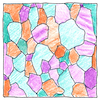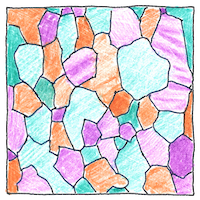Pierre Weiss
electromagnetism

|
Magnetic domain
Pierre Weiss was the first to say atoms in a ferromagnetic material align in somewhat random groups called domains that contain a trillion or more atoms. Weiss didn’t say why. When a material cools below its Curie temperature, each crystalline grain spontaneously divides into domains to reduce its magnetostatic energy. It doesn’t divide into too many domains because it takes energy to maintain the surfaces where domains of different orientations meet. If the orientations of domains add up to greater than zero, the material is magnetized to some degree; otherwise, the domains balance to zero.
Other domains
Like a sardine, an atom may swim alone, but it prefers to swim in a school, although not for the same reason. Somewhat like synchronized swimming —not for the same reason. Likewise synchronization of periods of women in a dorm—not entirely the same. Likewise internet domains, the three biological domains—archaea, bacteria, and eukarya— and geographical domains of feudal kings. Where are we going with this? The word “domain” suggests a domain of similar arrangements.
Magnetic moment
This magnetic moment is timeless, potentially turning if attracted.



The modern explanation of the magnetic domain is based on the effects of magnetostriction, and the “exchange interaction” of quantum theory, which we must leave for another day.
See also in The book of science:
Readings in wikipedia: